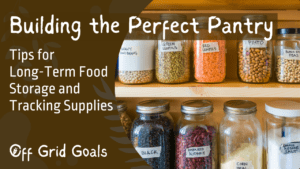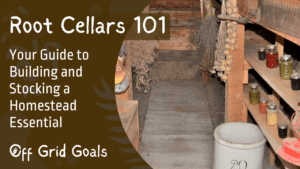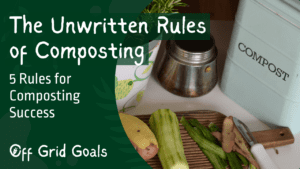If you’re looking to level up your self-sufficiency game and extend the shelf life of your harvests, it’s time to dig deep into the world of root cellars!
These underground storage havens have been a staple of homesteading life for centuries, providing a cool, dark environment ideal for preserving fruits, vegetables, and more. So, let’s explore what root cellars are, how to build one, and what delicious goodies you can stash away for the seasons ahead.
What is a Root Cellar?
A root cellar is a simple underground storage space designed to keep perishable foods cool, dark, and humid. Using the natural insulation of the earth, root cellars provide a consistent temperature and humidity level, perfect for storing fruits, vegetables, preserves, and even homemade wine.
Building Your Own Root Cellar:
Now, you might be thinking, “Building an underground storage space sounds like a daunting task.”
Good news: you don’t need to be a master builder to create a functional root cellar.
Here’s a simple step-by-step guide to get you started:
- Choose Your Location: Look for a spot on your property that’s away from direct sunlight, well-drained, and easily accessible. Ideally, your root cellar should be located on a north-facing slope to take advantage of cooler temperatures.
- Dig Your Hole: Using a shovel or excavator, dig a hole deep enough to accommodate your storage needs. The size of your root cellar will depend on the amount of produce you plan to store and the space available on your property.
- Build the Structure: Once you’ve dug your hole, it’s time to build the walls and roof of your root cellar. You can use a variety of materials, including wood, concrete blocks, or even recycled materials like tires or barrels. Just make sure the structure is sturdy and well-insulated to maintain a consistent temperature.
- Add Ventilation: Proper ventilation is key to preventing mold and mildew growth in your root cellar. Install vents or pipes to allow for airflow while still maintaining a cool, dark environment.
- Insulate, Insulate, Insulate: To maximize energy efficiency and temperature control, be sure to insulate the walls and roof of your root cellar. You can use materials like straw, sawdust, or foam insulation to keep the cold in and the heat out.
- Stock Your Cellar: With your root cellar complete, it’s time to start stocking it with all your favorite goodies. But what exactly should you store in your root cellar? Let’s dive into that next.
What to Store in a Root Cellar:
The beauty of a root cellar lies in its versatility. Here are some common foods you can store in your root cellar:
- Root Vegetables: Think potatoes, carrots, beets, turnips, and onions. These hearty veggies thrive in cool, humid conditions and can last for months when stored properly.
- Apples and Pears: Crisp, juicy apples and pears also do well in a root cellar, maintaining their flavor and texture for months after harvest.
- Winter Squash: From butternut to acorn to spaghetti squash, winter squash varieties are a staple of the root cellar pantry, adding a burst of color and flavor to winter meals.
- Canned Goods: If you’ve been busy preserving summer’s bounty through canning, your root cellar is the perfect place to store your jars of jams, pickles, and sauces.
- Homemade Wine: For the budding winemakers among us, a root cellar provides an ideal environment for aging and storing homemade wine, allowing flavors to mellow and mature over time.
With a little elbow grease and some creative thinking, you can build your own underground storage oasis and keep your harvests fresh and delicious all year round.
Happy digging and storing!


















